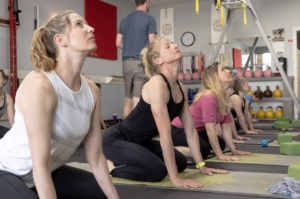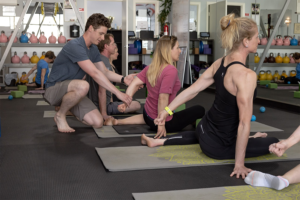Flexibility vs. Mobility
Flexibility vs. Mobility – If you grew up in the era of the Presidential Fitness Test, you may remember the seated stretch. You sat down facing a metal box and pushed a little tab as far as you could stretch, while your gym teacher took notes so you could measure your flexibility. This kind of thinking – that the more flexible we were meant that we were healthier – led millions of Americans to focus on passive stretching as a way to improve health. While that’s not a bad thing, it’s not the whole picture.

Flexibility is simply the ability for your muscles to lengthen, or stretch. Whenever you bend down to pick up car keys you dropped, your hamstrings are lengthening to make sure you don’t snap in half. Whenever you scratch your back, your triceps are lengthening so you can reach. Flexibility is simply a passive lengthening of your muscles.
Mobility, in contrast, is active (and it’s where the money’s at). To be mobile is to have the ability to actively move your arms, legs, spine, etc. through their full range of motion with no restrictions. For that, you need strength, balance, and coordination, all of which benefit you both in the gym and in your daily life.

Actively moving through a full range of motion is essential in preventing injury, ensuring lasting joint health, and maintaining a pain-free body, and can help your body stay more resilient for longer.
